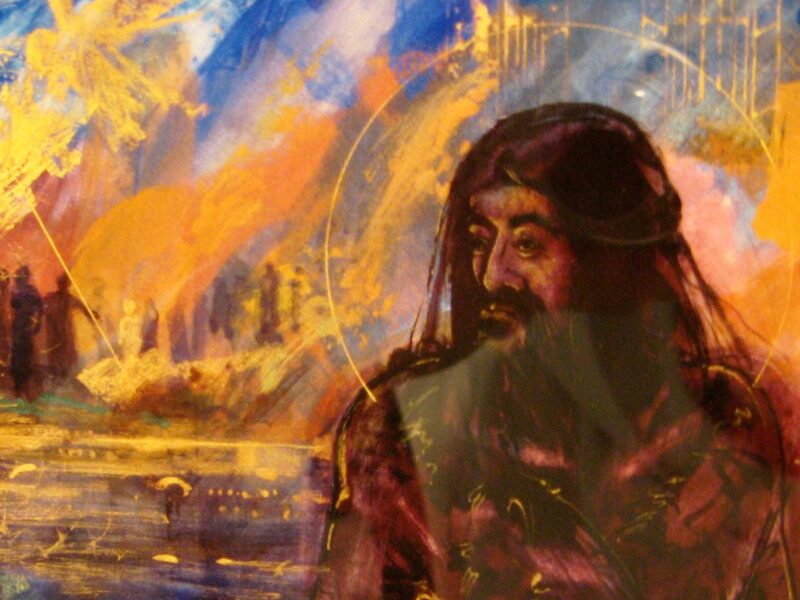
A New Creation
Fifth Sunday of the Year. Fr Allan White suggests that Jesus came to do more than heal the sick.
Jewish understanding of the last days, when the Messiah came, the End would be an image of the beginning, the first creation would be as the last. In the last days not only would the last redeemer, the Messiah, be as the first, Moses the great and pre-eminent teacher, the world would once again be as it was in the beginning. Jesus restores that unity between humanity and divinity lost in Eden. These things happen on the Sabbath. The Sabbath is a symbolic return to the peace and communion of the Garden of Eden, On this Sabbath Jesus heals a man and a woman, the symbolic representatives of the wounded human creation. They represent us: the man who has lost his freedom and is subject to an alien force which enslaves him, and the woman, who is laid low by physical infirmity. Jesus begins his work of recreation in this small town by starting to construct a new community in the house of Simon and Andrew.
In the house Jesus took hold of the sick woman’s hand and ‘raised her up.’ Now healed and made whole, her first response was to serve the Lord. The service of the Lord is for men and for women. Jesus is not founding an institution but restoring the integrity of humanity. The service of the Gospel is for all. This new people in Simon and Andrew’s house called out of the elect people of Israel embarks on the pilgrimage of repentance. The word Mark uses for repentance is ‘metanoia’. It is formed of two Greek words meaning ‘change’ and ‘mind’ or ‘outlook’ or ‘vision’ or ‘perception’. When we repent we change our minds with a view to changing our hearts. We acquire a new way of seeing. This small group, gathered in the apostolic house, was beginning to see, but their neighbours could not. Mark tells us that when the Sabbath was over the entire city arrived at the door of the apostolic house. They brought with them their sick. Jesus had compassion and healed them. There is a difference between the household of faith and the crowd who are thronging around the door of Simon’s house. The crowd punctiliously observes the Sabbath. They had heard what he did for Simon’s mother-in-law. They were drawn to him not by the religious impulse of conversion but out of a desire for healing. When they had received that gift they went away. They did not stay and serve Jesus. They did not become members of his new household of faith.
Early the next morning Jesus went off to a lonely place to pray. His disciples came in search of him. Mark uses a strong phrase, ‘they hunted him down’. They said, ‘everyone is looking for you.’ They imply that he should come back and satisfy his public. Jesus says that he is not to be confined to this place. He is not to be a local boy made good. He must extend his preaching work. His mission was not to be a healer but to change the world by completing the work of salvation. The crowds who pursued him came to him not because they recognised his dignity and mission, but because they wanted something. They saw him as offering them a service. They did not come to serve him but saw him as a function of their own needs. God is not there to serve us and to be rejected when he appears to fail us and does not fulfil what we see as our needs. Jesus had come to preach repentance and the arrival of the kingdom, but they were overwhelmed by their present need. They did not want the world to be changed but only their circumstances. They wanted their lives to be changed through the removal of suffering and pain. The consequences of the Fall were sickness and death. That original wound can only be healed through the cross of Jesus. It is Jesus who will take the consequences of the Fall on his shoulders in the shape of the cross. In compassion and grace Jesus extends the possibility of authentic healing. They stop short at that and opt for the superficial.
Readings: Job 7:1-4,6-7 | 1 Corinthians 9:16-19,22-23 | Mark 1:29-39
Sorry, the comment form is closed at this time.



A Website Visitor
Thanks for the insight into this passage.